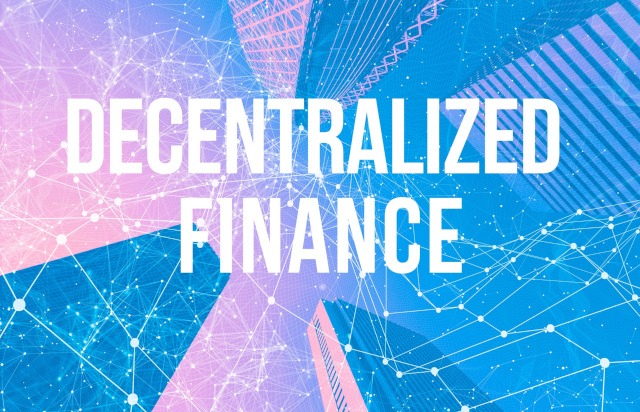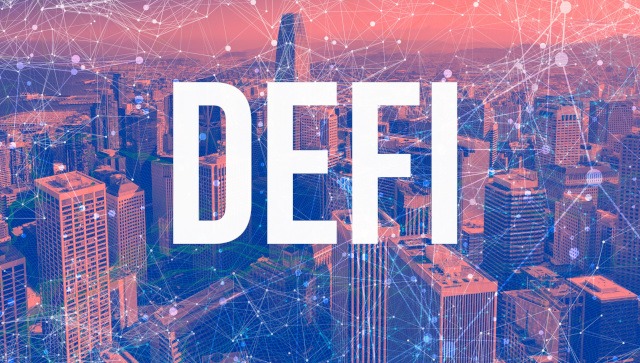
It's necessary to change to become relevant!
Recently, the world has witnessed a revolution in information technology and digital media.
The popularization of the internet in the 90s saw an explosion in web users. Information has become easier and faster, and virtually anything is obtainable with a simple mouse click! It has become increasingly difficult to imagine the modern world without the internet.
There has also been a proliferate of new terms around the internet.
A new vocabulary for money
In 1998, Wei Dai first used the term “B Money” and shortly thereafter, Nick Szabo created “Bit Gold”, an electronic money system that required users to complete a proof-of-work function with the solutions being cryptographically computed and published.
In 2009, Satoshi Nakamoto (or someone using that pseudonym) created Bitcoin, the first decentralized cryptocurrency. From thereon, terms such as cryptocurrency, blockchain, Fintech, Techfin have become widespread. This brought a lot of positive changes, including:
- reducing centralization in the financial system
- contributing to the ease of access to banking services and the financial market in general,
- reducing fees and charges
- and bringing more agility and speed to the acquisition of these services.
To find out more about future trends in the financial markets, I interviewed Tom Shnaider. He holds a Masters Degree in Management and Business Analytics from HEC Lausanne, and is a crypto and blockchain entrepreneur, and co-founder of Apollo Consulting.
We spoke to him about technologies in the finance sector and future trends.
GBN: Silicon Valley in the United States and Silicon Wadi in Israel are the two main hubs of high-tech industries on the planet. Many startups were technology innovators and some are now in the Global Forum 500 list of Fortune magazine. Constant innovation has highlighted the success of technology service providers within the financial sector. Do you believe that it will be necessary for countries to start investing in the creation of these technology centers in order to foster innovation in these services?
Tom Shnaider: Yes, countries must develop their own innovation centers. Hubs are essential for innovation because outside of a hub people don’t pay attention to your projects, they either don’t understand them or don’t have the time to care, they don’t want to know, and they most probably won’t give you money or space to work. In hubs, all the people who are interested in innovation and are interdependent come together: innovators, investors, dreamers, leaders, job seekers and experienced entrepreneurs. When all these people get together it doesn’t only help innovation, it creates synergies because these people meet and talk. In other words, hubs accelerate innovation exponentially.
On the other side, when you don’t have a hub, you lose brains and money because innovators and investors will leave to find a hub in another city or country. Like here in Switzerland, Zug is leading the crypto revolution and other cantons like Neuchâtel, Zurich and Geneva are trying to bring companies to stay to avoid losing the tax money and jobs. In my situation, for example, I’m asking myself if I want to join crypto Valley and move to Zug for my future start-up or try my chances in an incubator here in Geneva. Time will tell I guess.
GBN: When we think about the technologies available to the financial sector, the first thing that comes to mind is the facilitation of customer access to the services offered by companies in this area. What do you believe can still be offered or improved in terms of this access?
Tom Shnaider: It does facilitate access; we can imagine for example that innovations around identity control will eventually facilitate even more our interactions with financial institutions by making everything safer. On the other hand, it can also lower prices, because we pay a high fee for the special ability of banks to validate the transactions we make. If you take away this power because blockchain validates the transactions itself, banks will have to reduce their prices. Or, if the banks internalize blockchain technology it won’t take them as much effort to validate transactions and it will reduce lag and fees.
Overall, blockchain is the final competitor we needed to show to the financial market that we can do things differently and as we know competition is healthy; it lowers prices and raises quality.
Today, it still takes a day or two to validate a transaction through our bank account, and people won’t accept that for long.
GBN: Cryptocurrencies are spreading rapidly. But many people are still resistant to its use. Why is this happening and what needs to be done to change this scenario?
Tom Shnaider: I think they are four main reasons that merge into one big mess. First of all, people need time to get acquainted with the subject, a lot of people don’t grasp the idea behind blockchain, let alone the technology. Secondly, because of the lack of general knowledge a lot of bad projects can see the light of day. Moreover, add the lack of regulations and finally, psychological factors like FOMO and greed and you get pure chaos, a completely unstable and opaque market. Which in turn will slow down mass adoption. But it won’t last, more regulation, safer and clearer projects will make it so easy to use that it will eventually take over. I don’t think that people have to understand something to make it mainstream, lot of people don’t understand how money works or what inflation is, or how smartphones and Wi-Fi work, but as long as it works without too much friction and it facilitates our life people will adopt a technology. Also, I don’t believe that we must break the system; we need to integrate innovative solutions into our existing system so we can get access to better services safely. For example, even though hacks and mistakes happen and reduce general confidence in the crypto market, they are an important part of every innovation. They help to spot the weaknesses and to patch them, resulting in better and safer services.
The whole idea behind the creation of Apollo Consulting is to help people who want to understand what is going on with the help of dedicated consultants. Our clients are very diverse but they all share the same will to understand the revolution that is afoot and leverage it.
GBN: Nowadays, there are apps that allow people to learn how to invest in the financial market and to make these investments in a real way. These apps facilitated the access of new customers to these companies, and at the same time provide greater agility in carrying out financial operations. What do you believe can still be done to make investing in the financial market something more accessible and less elite?
Tom Shnaider: Companies like Swissquote and now FlowBank are making it possible for people to take their investments into their own hands, without having to go to their broker at the bank. They did that by combining low fees, good apps, and educational material. It might not be a great idea for everyone but for those who want more control over their investments, these apps are great.
Cryptocurrencies took this concept of autonomy to a whole new level, and for better or worse decentralization took it further than ever.
The traditional players will learn new ways of doing things from the cryptocurrency world and people will expect new standards set by cryptocurrencies and the apps that revolve around them.
To answer your question, the way to make the financial markets more accessible is to offer educational material, low fees because most people don’t have that much money to invest, great UX (user experience), and transparency.
GBN: In recent years, the term blockchain has been heard a lot. This technology has impacted many sectors and has brought about a real revolution. Basically, information is transferred in blocks with lots of information recorded within them. For you, what is the strength of blockchain, and how will its use impact us in the future?
Tom Shnaider: The internet connected the world and by doing so created huge trust issues, the need for intermediaries comes from the difficulty to trust each other, so when I send you money, I need a bank to tell you that I have the funds and they’re ready to be sent to your bank account for example. The real miracle of blockchain technology is that it removes the need for trust because the system is made in a way that every transaction is verified and recorded immutably, so you can be sure that once someone sent funds and the transaction was validated, you’re good to go. Or if someone shows you a contract, a diploma, a certificate or a painting you can be sure that it is an original version because it’s registered on the blockchain and you can verify that it hasn’t been tampered with.
Blockchain is the security that the internet needed. Its use will bring us closer than ever and will make our infrastructures faster and more efficient.
GBN: In terms of innovation, what will be the next challenges for the traditional market and what should we have as new technologies in the coming years?
Tom Shnaider: I am no inventor so it’s hard to imagine what new technologies will emerge, but one thing is for sure: we haven’t seen the end of new uses for blockchain technology. We’ve heard about electricity grids with an optimized distribution of electricity to get the exact amount of what you need and sell the rest, IDs that can’t be forged, charity funds that are somewhat corruption-proof because you will be able to send money directly to the people who need it. In a way, we’re seeing the end of pricey intermediaries. There is always a trade-off between safety and innovation but with time the crypto world will become safe and stable and the traditional market players better integrate it or face the risk of staying behind.
GBN would like to thank Tom Shnaider for taking the time to talk to us.
Here to stay
There are a number of conclusions we took from this interview. The main one is that it is necessary to educate people to be able to use new technologies. However, so that new technologies are developed and can make our lives easier, technology centers must be created and encouraged so that talent does not migrate to other centers.
Blockchain technology is here to stay and should bring with it many changes in terms of modernizing the tools we have at our disposal today. The security that it incorporates into the technological tools we have today are the biggest advances.
As Shnaider says, it is difficult to predict the future of technology. However, it is necessary to reaffirm that the constant focus and investment in research and the development of new technologies will be the great differential and what will keep companies and technological centers relevant in the future.
Further reading:
TOTVS
Wallstreet.com
Further articles by Guilherme Santos Saraiva:
Outsourcing: Advantages and disadvantages
The Back Office: What it does and where it is going
Resources:
Investopedia
Study.com
Wikipedia
Image source:
Canva





